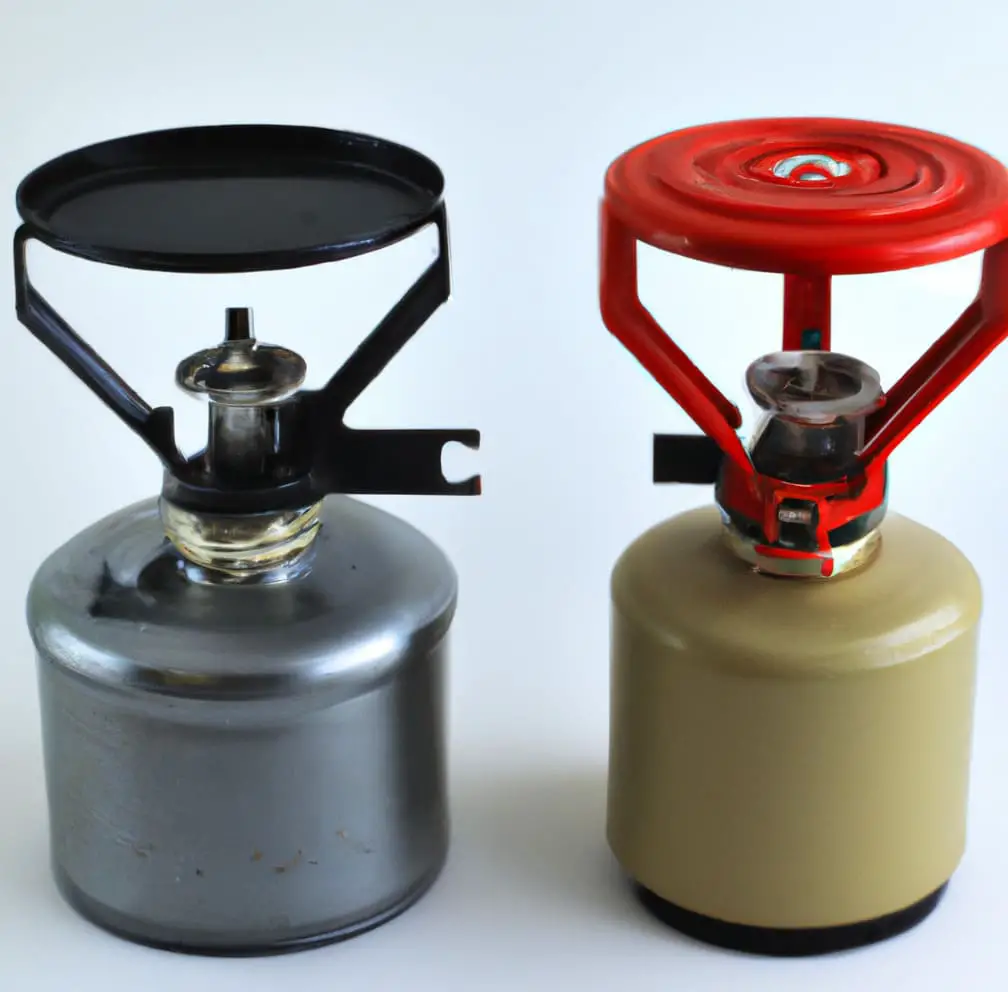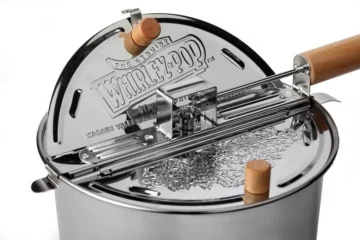When it comes to outdoor cooking, having the right stove can make all the difference. Two popular options for backpackers and campers are alcohol stoves and canister stoves. While both have their pros and cons, the debate rages on over which is the better choice for outdoor cooking.
Alcohol stoves are lightweight, inexpensive, and easy to use, making them popular among hikers and backpackers. On the other hand, canister stoves offer better temperature control and faster boiling times. They are more efficient in cold weather conditions. So, which stove comes out on top in the huge outdoor cooking showdown? Join us as we dive into the alcohol stove vs canister stove and help you decide which stove is the right choice for your next outdoor adventure.
Can Alcohol Stove?
Yes, alcohol can be used as fuel in a stove. Backpackers and campers commonly use alcohol stoves because they are lightweight, easy to use, and efficient. Alcohol stoves use denatured alcohol, methyl alcohol (also known as methanol), or ethanol as fuel.
Alcohol Stove Vs Canister Stove? Everything Explained
What Is An Alcohol Stove?
An alcohol stove is a type of portable stove that uses denatured alcohol or other types of alcohol as its fuel source. Alcohol stoves are popular among hikers, campers, and backpackers because they are lightweight, compact, and easy to use.
Alcohol stoves usually have a metal or plastic base, a burner assembly, and a fuel reservoir. The fuel reservoir is typically filled with denatured alcohol, which is a type of alcohol that has been treated to make it unsuitable for human consumption. When the stove is lit, the alcohol is heated and vaporized, igniting and producing a flame.
Advantages and disadvantages of using an alcohol stove
Advantages of using an alcohol stove:
- Lightweight and compact: Alcohol stoves are lightweight and compact, making them easy to carry and transport on outdoor trips.
- Easy to use: These stoves are easy to light and adjust and require no priming or pumping.
- Clean-burning: They produce no soot or smoke, which makes them environmentally friendly and easier to clean up after use.
- Fuel availability: Denatured alcohol, used in alcohol stoves, is widely available and can be found in most hardware stores, outdoor stores, or supermarkets.
- Cost-effective: Denatured alcohol is relatively inexpensive, which makes alcohol stoves a cost-effective option for outdoor cooking.
Disadvantages of using an alcohol stove:
- Slower cooking time: Alcohol stoves typically have a slower cooking time than other stoves, such as propane stoves.
- Limited heat output: Alcohol stoves have a limited heat output, which makes them less suitable for cooking in extreme weather conditions or for large groups of people.
- Wind sensitivity: They are sensitive to wind, affecting their performance and requiring a windscreen to protect the flame.
- Fire risk: Alcohol is a flammable liquid, and alcohol stoves can be a fire risk if not used and maintained correctly.
- Temperature control: Alcohol stoves are less precise than other stoves, making it challenging to control cooking temperatures accurately.
Types of fuels that can be used in an alcohol stove
Denatured alcohol is the most common fuel used in alcohol stoves. However, other types of fuels can be used in alcohol stoves, including:
1. Ethanol
Ethanol is an alcohol that can be used as fuel in alcohol stoves. It burns cleanly and produces no harmful emissions.
2. Methanol
Methanol is another type of alcohol that can be used as fuel in alcohol stoves. It burns hotter and cleaner than denatured alcohol but is also more expensive and harder to find.
3. Isopropyl alcohol
Isopropyl alcohol, or rubbing alcohol, can be used as fuel in alcohol stoves. However, it burns less cleanly than other types of alcohol and can produce more soot.
4. Methylated spirits
Methylated spirits, denatured alcohol, are the most widely used fuel for alcohol stoves. It is a combination of ethyl alcohol and other chemicals that make it unsuitable for drinking.
Recommended scenarios for using an alcohol stove
- Backpacking: Alcohol stoves are lightweight and compact, making them an excellent choice for backpacking trips with little weight and space.
- Solo camping: They are ideal for solo camping trips where cooking needs are minimal, and there is no need for high heat output.
- Emergency preparedness: Alcohol stoves can be used for emergency preparedness kits because they are easy to use and do not require electricity or other fuel types.
- Ultralight hiking: Alcohol stoves are an excellent choice for ultralight hikers because of their lightweight design, which helps reduce pack weight.
- Day hikes: These are a good option for day hikes where a simple hot drink or meal is needed.
What Is A Canister Stove?
A canister stove is a type of camping stove designed to be lightweight and portable, making it a popular choice for backpackers, hikers, and campers who need to cook meals in the wilderness.
The stove has a burner head that attaches to the top of a pressurized fuel canister. The canister contains a mixture of propane and butane gases that fuel the stove. The burner is typically made of metal, with small holes or jets that allow the fuel to escape and ignite when lit with a match or lighter.
Advantages and disadvantages of using a canister stove
Advantages of using a canister stove:
- Lightweight and portable: Canister stoves are designed to be lightweight and compact, making them easy to pack and carry on backpacking or camping trips.
- Easy to use: They are simple to set up and operate. The fuel canister screws onto the stove, igniting the stove with a spark.
- Efficient: Canister stoves are very efficient, with minimal fuel waste, and they can boil water and cook food quickly.
- Safe: Canister stoves are considered safe, as the pressurized fuel canister is designed to be stable and secure.
- Low maintenance: They require minimal maintenance and can last many years with proper care.
Disadvantages of using a canister stove:
- Fuel limitations: Canister stoves use pre-packaged fuel canisters that can be expensive and may not be readily available in remote areas.
- Temperature control: Canister stoves can be difficult to control the flame and temperature, making it challenging to cook more complex meals.
- Weather-dependent: They are sensitive to cold temperatures and may not function well in extreme weather conditions.
- Environmental concerns: Used fuel canisters can be difficult to recycle and contribute to environmental pollution if disposed of improperly.
- Limited fuel capacity: Canister stoves have a limited fuel capacity, and larger groups may need to bring multiple fuel canisters, which can add weight and bulk to the load.
Types of fuels that can be used in a canister stove
Canister stoves typically use propane and butane gas stored in a pressurized canister. However, some canister stoves can be adapted to use other types of fuel, including:
- Isobutane: Similar to butane, isobutane is a clean-burning fuel ideal for cold weather conditions.
- Propane: Propane is a standard fuel used in outdoor grills and can be used in some canister stoves.
- White gas: Also known as Coleman fuel, white gas is commonly used in liquid-fuel stoves. Some canister stoves can be adapted to use white gas with an additional attachment.
Recommended scenarios for using a canister stove
- Backpacking: Canister stoves are lightweight and compact, making them ideal for backpacking trips where weight and space are at a premium.
- Camping: They are a convenient and efficient option for cooking meals while camping, especially in areas where campfires are not allowed.
- Hiking: Canister stoves are easy to pack and carry, making them great for day hikes or overnight trips.
- Emergency preparedness: Canister stoves can be a lifesaver in emergencies, such as power outages or natural disasters, where access to electricity or gas may be limited.
- Traveling: These stoves are an excellent option for traveling, especially if you plan to cook your meals or are staying in accommodations without a kitchen.
- Boating or kayaking: Canister stoves are convenient for cooking on boats or kayaks, where space and weight are limited.
Comparison Between Alcohol Stove And Canister Stove
Alcohol and canister stoves are popular camping stoves with unique features that can affect their suitability for different camping trips.
1. Weight
Alcohol stoves are generally lighter than canister stoves. Alcohol stoves are lightweight and do not require heavy fuel canisters, making them more convenient for backpacking or other activities where weight is a concern.
2. Fuel Efficiency
Canister stoves are generally more fuel-efficient than alcohol stoves. Canister stoves use a pressurized fuel system that allows for more efficient fuel use, resulting in longer burn times and fewer fuel refills. Alcohol stoves, on the other hand, have lower fuel efficiency and require more frequent refilling but are often more readily available in remote areas.
3. Ease of use
Canister stoves are generally easier to use than alcohol stoves. Canister stoves require minimal setup and are ready to use with the push of a button. Alcohol stoves require more setup and require the user to light the stove manually. Additionally, canister stoves have adjustable flame control, making adjusting heat output easier during cooking.
4. Cost
Alcohol stoves are generally cheaper than canister stoves. Alcohol stoves can be made from materials such as aluminum cans, making them a more affordable option. On the other hand, canister stoves require specialized equipment and fuel canisters, making them a more expensive option.
When considering which stove is better suited for different camping trips, it depends on the camper’s specific needs.
For short backpacking trips or solo camping trips, an alcohol stove may be a better option due to its lightweight and affordable nature. However, a canister stove may be more appropriate for longer camping trips with a group due to its fuel efficiency and ease of use.
In areas where canister fuel is easily accessible, a canister stove may be a more practical option. In contrast, in remote areas where canister fuel may not be readily available, an alcohol stove may be a better option due to its availability and ease of finding fuel.
Ultimately, the decision between an alcohol stove and a canister stove will depend on the individual camper’s specific needs and preferences.
- Brass Burners Vs Cast Iron Burners (Which Is Better For Cooking)
- Kucht Vs Thor (Everything Explained By Experts)
- Green Diamond Vs Blue Diamond Cookware
Can You Use An Alcohol Stove Indoors?
While alcohol stoves are a popular choice for outdoor activities like camping or backpacking because they are lightweight and easy to use, they can pose a significant fire hazard when used indoors. Alcohol has a low flash point, which can ignite easily and rapidly, especially in a confined space.
Furthermore, alcohol stoves produce carbon monoxide, a toxic gas that can be deadly in high concentrations. Without proper ventilation, carbon monoxide can build up quickly and pose a severe health risk.
For these reasons, it is highly recommended that alcohol stoves be used in well-ventilated outdoor areas only. If you need to cook indoors, consider using a different type of stove specifically designed for indoor use, such as an electric or gas stove.
Are Alcohol Stoves Safe?
Alcohol stoves can be safe if used correctly and with caution. However, certain risks are associated with alcohol stoves, mainly if they are improperly used.
Some potential hazards of alcohol stoves include:
- Fire hazard:Alcohol is a highly flammable liquid, and if spilled, it can quickly ignite and cause a fire.
- Explosion hazard:Alcohol stoves can create a pressure buildup if not used properly, leading to an explosion.
- Carbon monoxide poisoning:When burning, these stoves produce carbon monoxide gas, which can be deadly in enclosed spaces without proper ventilation.
To minimize the risks associated with alcohol stoves, it’s essential to follow these safety guidelines:
- Use the stove in a well-ventilated area.
- Keep the stove away from flammable materials.
- Avoid overfilling the stove with alcohol.
- Always monitor the stove while it’s burning.
- Use a windscreen to help prevent the stove from being blown out.
- Extinguish the flame properly after use.
- Store the stove safely when not in use.
Are Alcohol Stoves Any Good?
Alcohol stoves can be a good option for specific situations, such as lightweight backpacking or camping, where weight and portability are important factors. Alcohol stoves are generally lightweight and easy to use. The fuel (such as denatured alcohol or ethanol) is widely available.
Do Alcohol Stoves Work At High Altitude?
Alcohol stoves can work at high altitudes, but their performance may be affected by reduced air pressure and oxygen levels at higher elevations.
The air pressure is lower at high altitudes than at sea level, so the fuel combustion process may be less efficient, leading to longer cooking times and reduced heat output. Additionally, alcohol stoves rely on oxygen to burn, so the reduced oxygen levels at high altitudes can also affect their performance.
To help mitigate these effects, you can adjust the stove’s design, such as increasing the size of the jets, to allow more air into the stove. You can also use a windscreen to help trap heat and improve combustion. It’s also essential to ensure you use high-quality fuel, as lower-quality fuels can further reduce the stove’s performance.
Bottom Line
In the end, when it comes to the debate of alcohol stove vs canister stove, there is no clear winner as both have their pros and cons. Alcohol stoves are lightweight and easy to use, making them an excellent option for backpackers and hikers. In contrast, canister stoves are efficient and quick to set up, making them ideal for car camping and outdoor cooking.
Ultimately, the choice between the two will depend on individual preferences, cooking needs, and outdoor activity. So, whether you choose an alcohol stove or a canister stove, prioritize safety and proper usage to ensure a successful and enjoyable outdoor cooking experience.



